First Quarter: Sugaring time
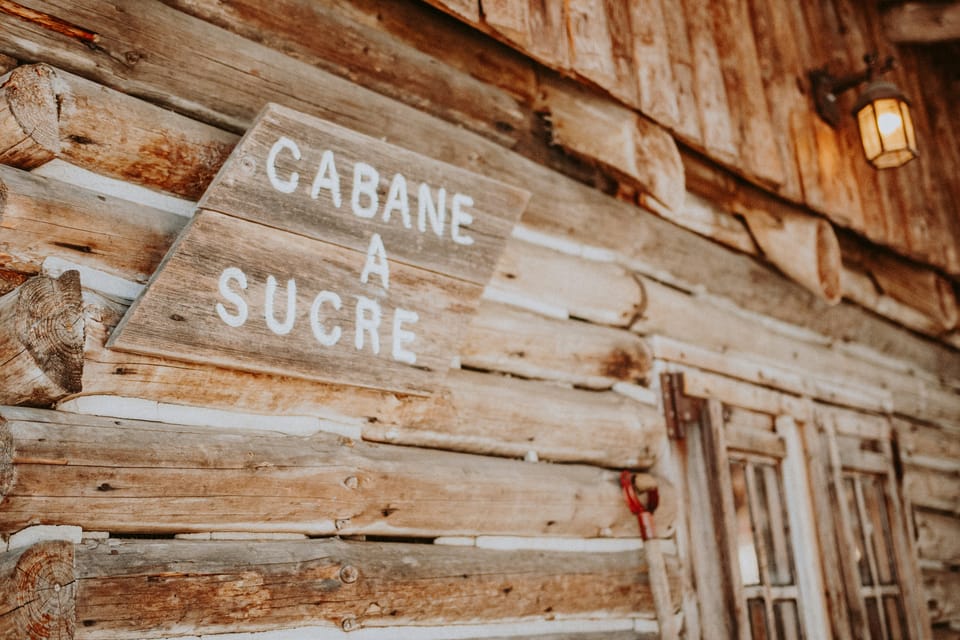
Hello. It's Friday, and for the first time since last June, I am circling back to the theme of tree lore: the special role that trees play in my experience of Celtic (and also Germanic) animism.
In the past I've written odes to the willow, the alder, the birch, the apple, the maple, the holly, the ivy, the oak, and the mistletoe; and there will be more to come. However, one of those trees is important enough in my day to day life that when I wrote about it almost a year and a half ago, I knew I would need to write a second post about it later. This is that post. I'm going to revisit maple trees.
For after all, in just a few more weeks it will be sugaring time where I live. The sap buckets will be going up on the taps, and the collected sap will be getting boiled in the sugar houses or in people's backyards. Further north, this process starts later as it depends on the right balance of nighttime and daytime temperatures; but overall, from the middle of February to the start of April you may smell that sweet steam near the right forests across northeastern Turtle Island, straddling the artificial "US" and "Canadian" borders. It's always confused me to see pan-continental restaurant chains advertising special maple flavoring in the autumn — yes, the leaves will be their brilliant scarlet then, but the fresh syrup comes when the days are getting lighter. Right now is when I start to crave maple flavor the most.
A childhood in Maple Nation
Many of us who do land connection work as ritual and/or decolonial practice may know Robin Wall Kimmerer's writing, especially her seminal 2013 work Braiding Sweetgrass. I think she is also a famous enough name (relatively) that many of us have heard of her without even reading her books. I was in the latter category for a startlingly long time; I read things by other people who were overtly or in retrospect inspired by her, so when I finally picked up Braiding Sweetgrass myself, maybe two autumns ago, it felt oddly familiar.
But not redundant. There is a special clarity, honesty, and tenderness in her style, and of course her perspective is particularly worth stepping into when studying deep ecology as a white settler — not only because she is Neshnabé/Potawatomi and her traditional knowledge informs her scientific work, but also because she writes with an incredible spirit of embassy toward non-indigenous readers, inviting collaboration and healing both between peoples and with the land. In my (limited) experience listening in to indigenous discourse this attitude is not uncommon, and what really seems to hold up reconciliation or reparations is either straightforward settler bigotry or paralytic white guilt. All of this aside, however, the aspect of Braiding Sweetgrass that affected me most was how Kimmerer lives in a bioregion not so far from or dissimilar from the one where I live, in fact virtually contiguous with it, and so the book enormously grew my kindled desire to connect with the land outside my window and under my feet.
Her description of this bioregion is best encapsulated in the book's chapter "Maple Nation: A Citizenship Guide." All bioregions have more than one keystone species, defined tidily and sufficiently on Wikipedia as "a species that has a disproportionately large effect on its natural environment relative to its abundance"; but Kimmerer evocatively names a few parts of this continent according to the exceptional, sacred importance that certain animals or plants have come to hold among multiple tribes there. Salmon Nation is what's colonially described as the Pacific Northwest, and over here — spanning the territories of numerous Algonquian tribes and the Haudenosaunee Confederacy — is Maple Nation. Among many gems that Kimmerer offers in this chapter, she says:
"What does it mean to be a citizen of Maple Nation? I put this question to Mark, who handles the finishing with a big paddle and the hydrometer to test the sugar concentration. 'That's a good question,' he says as he pours a few drops of cream onto the boiling syrup to quell the foam. He doesn't answer, but opens the spigot at the bottom of the finishing pan, filling a bucket with new syrup. Later, when it has cooled a bit, he pours out a little cup for each of us, golden and warm, and raises his in a toast. 'I guess this is what you do,' he says. 'You make syrup. You enjoy it. You take what you're given and you treat it right.' Drinking maple syrup gives you quite a sugar rush. This too is what it means to be a citizen of Maple Nation, having maple in your bloodstream, maple in your bones. We are what we eat, and with every golden spoonful maple carbon becomes human carbon. Our traditional thinking had it right: maples are people, people are maples. Our Anishinaabe word for maple is anenemik, the man tree."
Prior to reading such thoughts as these, I had sometimes felt conflicted about my love for maple products, as they are an indigenous tradition that too often has been heavily industrialized and taken out of tribal hands, with maple syrup obsession being seen as a trait of Euro-descended identities like "Québecois," "Canadian," "New Englander," "New Yorker," or "Yankee," and with the common phrase for this upcoming season being some iteration of "sugaring time" instead of something like Kimmerer's own Potawatomi example, Zizibaskwet Giizis (the Maple Sugar Moon). But nowadays I'm left with the impression that this can potentially a both-and situation. As I've said before, and as various people have said before me, unlearning whiteness as a settler and even un-becoming a settler is not about "turning" locally indigenous or reverting to an "original" Euro-indigenous condition, as neither of those options are possible; it is about creolizing, acknowledging our liminality, adapting ourselves to live in better relation to where we actually are, making ourselves less like invasive species and more like harmonious comrades. And to describe this bioregion as Maple Nation creates one beautiful entry point to that relation-building process, given how indeed, by this point maple syrup plays a deep emotional role for us settlers here too.
I was born technically in the South[1] but I moved up here when I was so young that although I developed neither regional accent I would say without a doubt I am the "New England" type of settler. Most of my closest relatives don't live in these parts anymore, and except for the Québecois side of the family there's no special ancestral tie; on the Cymric side everyone has largely been in Cymru or England, with the small cluster of exceptions in my mother's generation or her parents' generation who primarily wound up in areas like Pittsburgh or Baltimore; on the quiet, unspoken Ashkenazi side the main port of settlement was San Francisco; but despite not feeling particularly close with my Québecois ancestors either, I have been shaped by living in a landscape much like what they all knew, day in and day out. And I have spent enough time primarily around New Englanders — my father ultimately having become one of them if he wasn't already — that it's inevitably influenced my own one-person culture in even more ways than I care to admit. Something good that happens when growing up here, though, is the annual (at minimum) trip to the local sugar shack.
A sugar shack is much less edible than it sounds, but the point of going there is certainly to eat. Also called a sugar house, maple barn, or the Québecois cabane à sucre, it's a centuries old settler habit: someone starts collecting maple sap, boiling it into syrup, and not only selling the syrup itself but also the crystallized sugar and then some typically decadent, sweet, fatty lumberjack-style meals for breakfast, brunch, or even dinner. Up in Québec especially, this is a cultural touchstone and often a setting where live folk music will often be playing.
At the decidedly anglophone sugar shack I went to as a child — the one I still go to — it's a bit more of a generic tourist trap, but its reputation is well-deserved. The actual restaurant's food is absolutely delicious, the syrup pungently tree-ish. It takes forever to get a table and you can't reserve in advance, but you can kill time at an outdoor coffee and doughnut stand (their maple doughnuts blowing the Dunkin' variety completely out of the water), at a delightfully kitschy gift shop, or at my favorite part: a tour of the actual syrup production process. While the restaurant is open year round, that tour is only available when it's sugaring time, so if the annual visit is going to happen, it best happen then.
I had plenty of familial seasonal rituals growing up, but the sugar shack was the main one that felt totally specific to where we lived. If we had been in any number of other places in this hemisphere, we could still have gone apple-picking, or our town might still have had an annual strawberry festival. Where anything maple is concerned, though, this is a very unique situation globally. Elsewhere, maple species do exist that can be tapped for sap and made into syrup, which some cultures have done, but they aren't the ideal combination of species like we have here: sugar maple, red maple, black maple. The closest comparison I can think of is the use of birch sap in places like Russia and Scandinavia. Maybe they should be called Birch Nation.
Maple sap & syrup for the uninitiated
I am never totally sure who knows about how maple syrup is made if they didn't grow up with local maple producers as a piece of everyday life. So I will explain it as best as I can, though I'm not a botanist and I won't have as eloquent a description as Braiding Sweetgrass provides.
Virtually all plants have sap, although it varies in consistency and composition between species. I understand sap as a plant's blood, only instead of carrying oxygen it carries sugars. And for plants that can survive a frozen winter, it's often necessary to withdraw those sugars down into the base or roots for a few months, inducing an equivalent of hibernation. Lots of deciduous trees will do this as they drop their leaves, a process which typically starts when temperatures are still above freezing by day but fall below freezing by night. Then, after reaching this time of year when sunlight levels start to markedly increase again and there's another consistent balance of mild days and cold nights, the process reverses as sap starts flowing back up into the tree's extremities. Eventually things halt again for late spring and summer.
If you want to collect tree sap for human consumption, you need the sap to be actively flowing, and it's far better to collect it now than in autumn, because the amount of sap available is greater when it's been preceded by a period of long freezes than by a period of warm days. And tapping in autumn will also reduce the amount of sap available in the spring. Ultimately it does little harm to a tree to tap it — the sap is always in surplus — but spring sap is just better.
Maple trees are in no way unique for this. However, the species in this part of the world have particularly sweet sap. So while it isn't a worthy time or energy investment to collect the sap from most trees, these maples are very much worthwhile. It does still take gallons and gallons and gallons of sap, boiled for hours and hours, to reduce down to a single gallon of rich, dark syrup, but with the exception of birches mentioned earlier you probably would need even more sap from other trees to produce a similar result. And the flavor still might not compare.
The way I've learned it, it's hard to know exactly when the maples are ready for their spring tapping, but once you put the taps in and hang the collection buckets, usually around now, then you simply start waiting and checking. The sap drips very slowly, but drip it does. Conversely, the maples tell us very directly when they're done: having received all the sap they need in their flower buds, they bloom. Tiny clusters of red flowers on the red maples, and greenish yellow flowers on the sugar maples. You won't hear a drip after you see those.
Besides what I mentioned in my last maple post about atmospheric carbon's threat to maples' fall foliage display, another effect of the eco crisis on these wonderful trees is that global heating has altered and will continue to alter what sugaring time constitutes. Sometimes sugaring time starts earlier and ends earlier, making syrup producers scramble to tap before they'll miss some of it. Worse, sugaring time can simply be shorter, as regions like this one now still have a proper winter but the transitional seasons are starting to shrink; once above-freezing daytime temperatures return, now it seems like only a few weeks before freezing nights end too.
Unless we're in a truly worst-case apocalypse, I personally doubt that maple syrup is one of life's pleasures that will ever go away altogether. However, averting such a scenario is a particularly significant reason in my head for all my physical neighbors and I to be advocating for the earth and flowing with the land's rhythms. Not only are maples the dominant, keystone tree species across this bioregion, with many other species depending on their presence — their special gift of sap is the language of human connection to these forests. If it even just becomes rarer, that will be a loss for us.
A gift in the lean times
I say gift because of something else about the maple that Kimmerer turned my attention to. We are stepping into the season when traditionally there is very little to hunt or forage, and nothing planted that can do more than germinate; if our winter stores were not enough, starvation could be a risk. It's no accident that Christianity used to (and occasionally still does) designate the period known as Lent as one of fasting. But living in this particular area, the timing of maple sap flow is perfect. The syrup and sugar are not something to eat every day, but they give us a huge jolt of glucose, that most basic form of energy for life to stay life. In centuries past, I wonder how often people here survived a hard winter specifically through the offerings of these trees.
As is becoming a theme in recent posts, I feel unable to avoid thinking about the difficult economic times that have just begun both personally and societally. Everything is about to become lean in a way that goes beyond the season — but the season in question compounds that feeling for me. The sense of a real, tight pinch. The pressure toward perfect austerity.
A very good friend of mine accompanied my owner and I to "our" sugar shack a couple of years ago. The other day she asked me recently if we could go back together. I agreed in a heartbeat. My owner and I would already be planning that journey soon, and we almost never buy maple syrup at a grocery store anyway, but we're getting into a general habit of taking other people with us when possible — and this year I feel suddenly as if going out of our way for some maple syrup and having a good meal in the process will be a sacredly necessary act. Times are hard but there is still sweetness to fuel us.
If my loved ones and I can stay on this land safely, then I want to continue weaving myself into better relation with it and finding ways to enable indigenous sovereignty and understanding the maple trees as people. I hope to become a good citizen of Maple Nation. If I have to flee and instead build new relation somewhere else, probably with the land of my Cymric ancestors, the maples and their sugar will be one of the things that will most break my heart to lose.
[1] By the antiquated definition of the Mason-Dixon line, but also by the state in question having belonged to the Confederate states.
Thank you for reading. Next week I will have some thoughts on the motif of songbirds choosing their mates in this season. The following Friday, I will be traveling but my intent is to write and schedule a post in advance, now that I finally know how to do that with Ghost.io's interface; expect something about death work in the context of David Lynch's passing and my love for Twin Peaks.
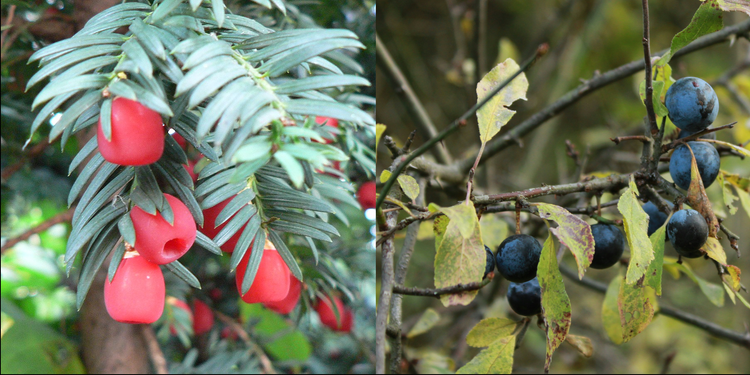
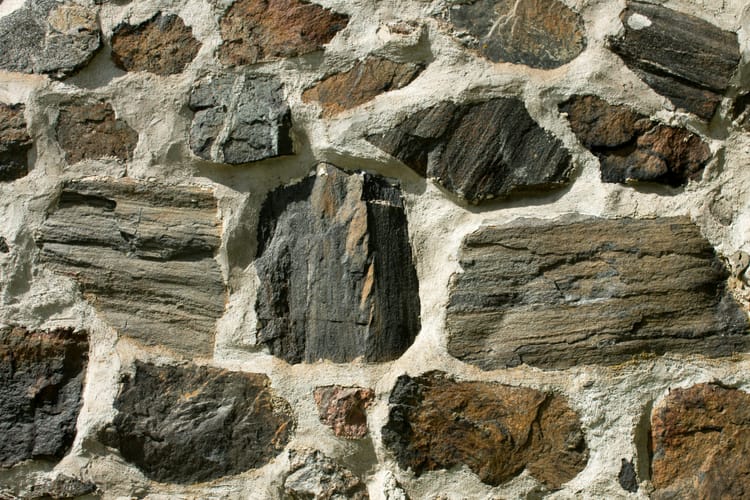
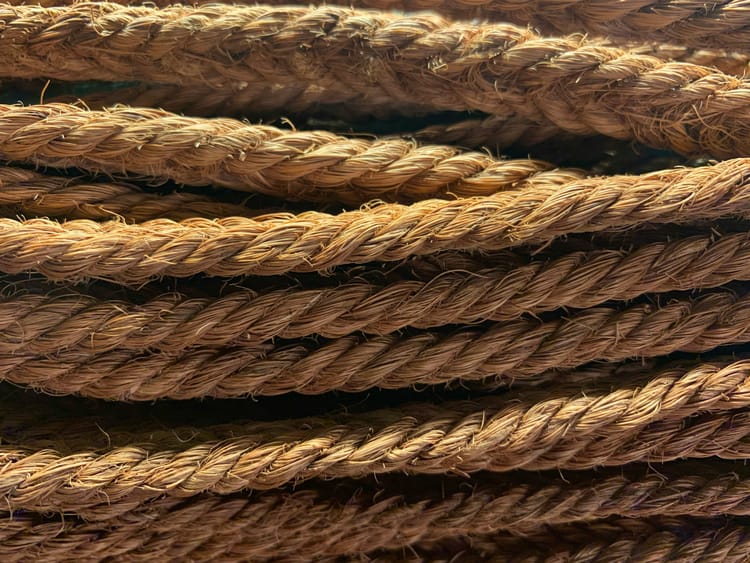
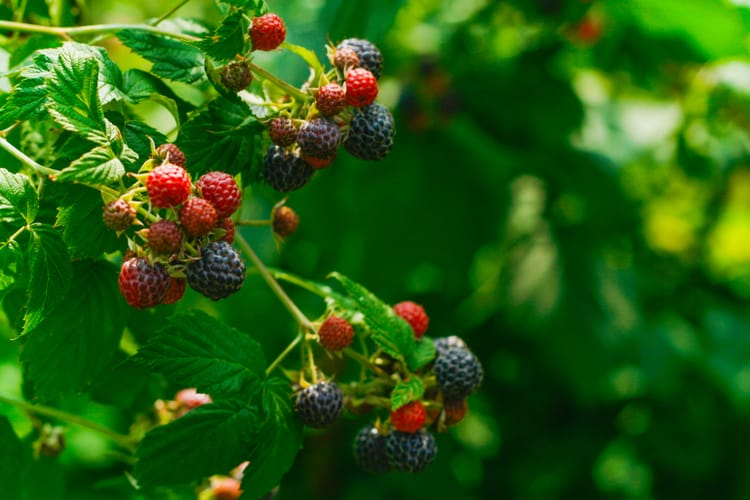
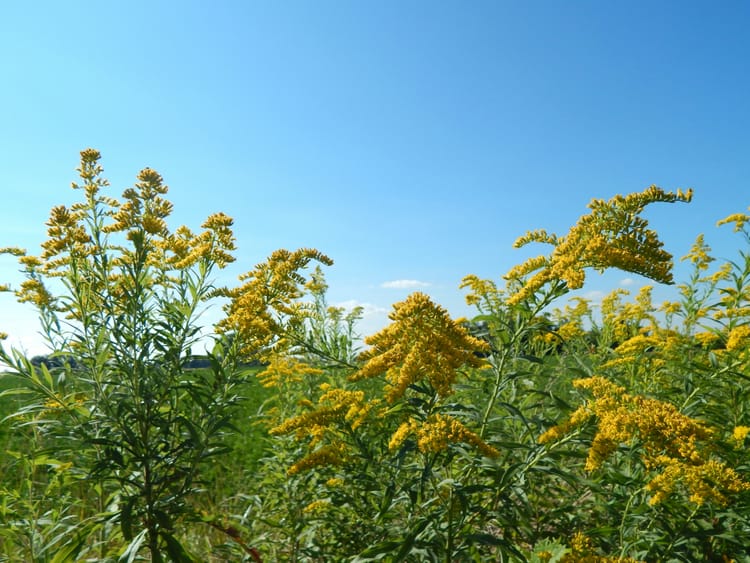
Member discussion